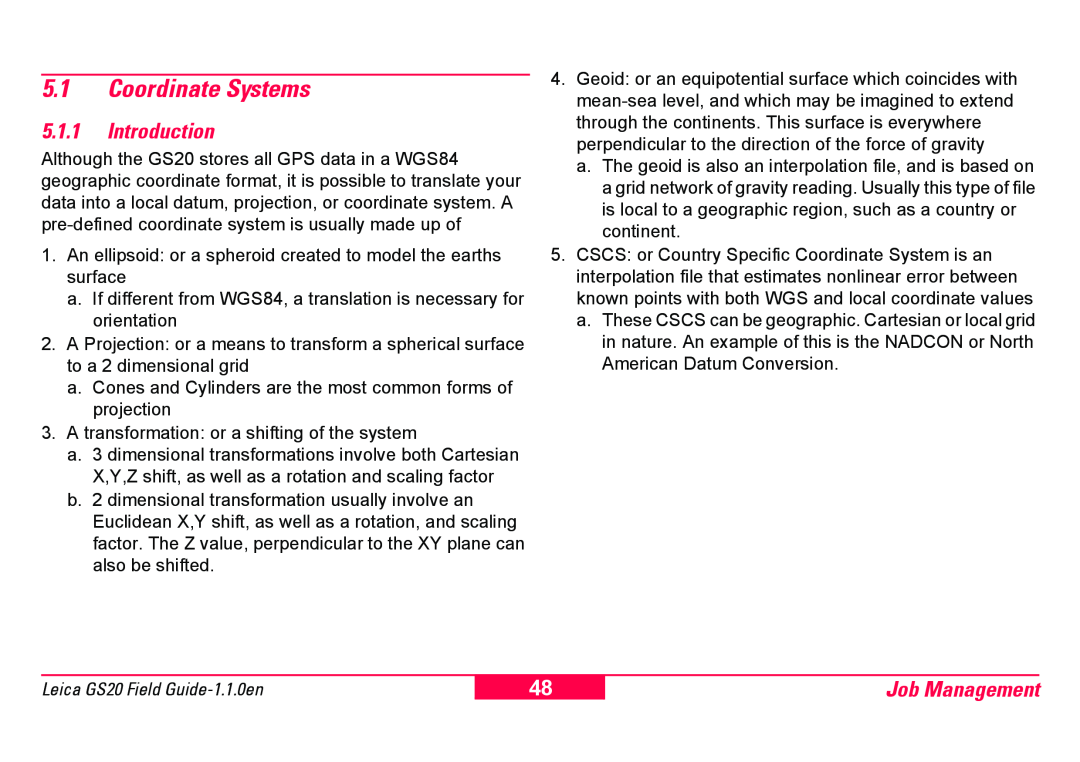
5.1Coordinate Systems
5.1.1Introduction
Although the GS20 stores all GPS data in a WGS84 geographic coordinate format, it is possible to translate your data into a local datum, projection, or coordinate system. A
1.An ellipsoid: or a spheroid created to model the earths surface
a.If different from WGS84, a translation is necessary for orientation
2.A Projection: or a means to transform a spherical surface to a 2 dimensional grid
a.Cones and Cylinders are the most common forms of projection
3.A transformation: or a shifting of the system
a.3 dimensional transformations involve both Cartesian X,Y,Z shift, as well as a rotation and scaling factor
b.2 dimensional transformation usually involve an Euclidean X,Y shift, as well as a rotation, and scaling factor. The Z value, perpendicular to the XY plane can also be shifted.
4.Geoid: or an equipotential surface which coincides with
a.The geoid is also an interpolation file, and is based on a grid network of gravity reading. Usually this type of file is local to a geographic region, such as a country or continent.
5.CSCS: or Country Specific Coordinate System is an interpolation file that estimates nonlinear error between known points with both WGS and local coordinate values
a.These CSCS can be geographic. Cartesian or local grid in nature. An example of this is the NADCON or North American Datum Conversion.
Leica GS20 Field
48
Job Management
